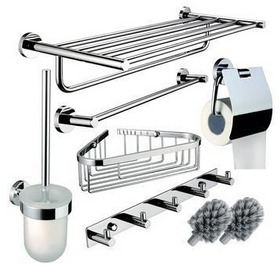 According to the data released by the China Building Sanitary Ceramics Association, in the comparison of revenue and profit of building ceramics enterprises in 2012, sales of building ceramics enterprises increased by 2.93%, sanitary ceramics companies decreased by 3.08%, and hardware and sanitary wares companies increased by 0.27%. The growth rate of the company's profits, architectural ceramics enterprises increased by 8.31%, sanitary ceramics companies fell by 5.55%, and hardware and sanitary ware companies decreased by 25.43%. The decrease in the percentage of hardware and sanitary products is basically the sum of the decline in the company's products, which is basically regarded as abnormal. "Performance.
According to the data released by the China Building Sanitary Ceramics Association, in the comparison of revenue and profit of building ceramics enterprises in 2012, sales of building ceramics enterprises increased by 2.93%, sanitary ceramics companies decreased by 3.08%, and hardware and sanitary wares companies increased by 0.27%. The growth rate of the company's profits, architectural ceramics enterprises increased by 8.31%, sanitary ceramics companies fell by 5.55%, and hardware and sanitary ware companies decreased by 25.43%. The decrease in the percentage of hardware and sanitary products is basically the sum of the decline in the company's products, which is basically regarded as abnormal. "Performance. It is not difficult to see from the data that when the entire sanitary ware industry is declining, the down trend of hardware and sanitary ware is particularly evident. When the reporter visited some hardware companies, the relevant person in charge of the company also stated: “Last year, hardware was very difficult to do. This year’s The situation may be even worse.†While the sales of bathroom products have declined, the profits of hardware and sanitary products have been reduced much more than other sanitary products. Some industry experts have also predicted that the performance of hardware and bathroom will indicate that the hardware and bathroom are currently The market is becoming saturated.
Exports were blocked, domestic consumption was limited With the rapid decline of China’s foreign hardware export market in 2011, especially the North American market and the Japanese market, according to 2012 statistics, the United States accounted for 19.92 of the countries exporting hardware and sanitary wares in China. %, while the Japanese market has fallen out of the top ten. With the decline in the export of hardware and sanitary wares, some of the original export companies began to fought in the domestic market, which made the competition in the domestic market, which was originally tense, even more fierce, and the hardware and bathroom market began to play a fierce price war.
When the reporter interviewed the brilliant plumbing, the person in charge of the company told reporters: “The development of hardware and sanitary hardware in recent years is not optimistic. In particular, foreign exports have seen a sharp decline in one year, leaving many companies unprepared, some companies In pursuit of profits, we started endless price reduction promotions. We use low prices to obtain returns. One company cuts prices, the other lowers prices, and the next one goes down again. In this way, the benign competition in the industry is undermined. Everyone is only on price. Make a fuss."
The recent occurrence of the “leaded door†incident in taps has attracted the attention of some foreign markets through media hype and began to affect the export of domestic hardware and plumbing. When reporters surveyed the market in Nan'an and Zhejiang, some companies reported that some countries have strengthened the inspection of heavy metal content in hardware and plumbing, and this has a great impact on current export-oriented enterprises.
In China, the ubiquitous sales price cuts become a common feature of hardware sanitary sales. According to a market sales staff, with the significant price cuts and promotions of hardware and bathroom, leading small workshop companies began to take advantage of this time. "The first thing that sales people think about is definitely the price. Then they will consider the quality and functionality of the product. Some small workshops see the business opportunities there, so they start to drive down the price and put some counterfeit goods on the market. As long as the angle valve is only one dollar or even seventy-eight horns, and the brand-name companies have no position in the market, the phenomenon of seizing the source of tourists is very serious, and the vicious cycle of prices is even more amazing."
From the first half of this year, hardware and sanitary products still have too few outlets in the cruel market, and the profits of hardware companies are less than 5%. This is why industry experts predict that hardware and sanitary ware have become saturated in the domestic market.
Rising raw material prices, shrinking corporate profit margins For companies, an important aspect of increasing profit growth is controlling raw material costs for production. With the increasing difficulty of market sales, the rents for raw materials and corporate dealers' stores are getting more and more expensive, which makes the hardware bathroom, which was already at the forefront of the storm, fall into a more embarrassing situation. With the increasingly fierce market competition in the hardware and bathroom industry, the days for dealers are even worse. “We can’t sell a few products a day, and sometimes we don’t even open a business for a few days. However, the rent for stores is higher year-on-year. After one month, don’t say that it is profitable to make profits. It is good to lose money.†A dealer surnamed Wang told reporters.
According to statistics, raw material prices have become a hot topic in the hardware and sanitary industry since 2010. By 2012, some of the main raw materials for hardware and sanitary products, such as copper, rose by 32% year-over-year within half a year, and have historically been high since the breakthrough of 9,000 US dollars/ton. The price of steel materials has risen sharply since October 2012, and has remained high until the middle of this year. This makes it difficult for hardware and sanitary companies that originally purchased raw materials for deep processing to sell through low prices.
The rise in raw materials has increased the cost of producing hardware and sanitary products. The original ex-factory price of a product was around 150 yuan, and with the rise in raw materials, the ex-factory price of the product was already higher than 200 yuan, which did not include processing costs. In this case, the market price fell. The fall, coupled with the increase in employees’ wages, the logistics costs of the company’s external transportation and the local storefront costs of the dealers, the final profit of a product is almost single-digit. A dealer smiled and said: "We are doing the porters for the market consumers."
The reporter learned that, as the market has not clearly shown signs of recovery, near the end of the time, in some large building materials stores, in addition to a small part of the hardware and bathroom distribution stores in the renovation, most of the stores are maintained as they are, and some hardware and bathroom stores have even withdrawn Large store.
The Traffic Safety Store Speed Bump and Speed Hump Buyers Guide
Benefits Rubber Speed Bumps and Speed Humps over traditional asphalt or concrete bumps are:
100% recycled material
Never need painting
Easy one person installation
Removable for snow plowing or pavement maintenance
Cost effective, years of high performance with low maintenance
When to use a Speed Hump instead of a Speed Bump?
Speed Bumps are designed to:
Improve pedestrian safety
Reinforce stop signs in parking lots
Reduce the risk of accidents on private residential streets, driveways and parking lots
Speed bumps are specifically made to slow drivers down to between 2 to 5 mph.
Speed Humps are designed to:
Slow traffic on public roads such as schools, hospitals, anywhere reduced vehicle speeds are desired
Be gentle enough so that emergency vehicles do not need to slow down
Industrial areas or areas with heavy truck traffic where high speeds can lead to an overturned vehicle
Speed humps are specifically designed to slow vehicles to between 10 to 15 mph.

Rubber Speed Breakers,Rubber Speed Bumps,Portable Speed Bumps,Rubber Speed Humps
Renqiu Xingcheng Rubber Products Co., Ltd. , http://www.rubbermats.nl